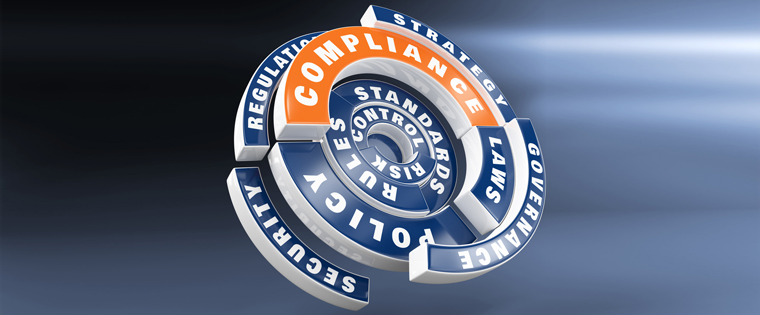Immersive Learning and Online Ethics and Compliance Training – The Perfect Fit

The objective of a compliance and ethics training program is to educate employees on rules, regulations, and ethical behavior. There are many situations employees come across in their daily jobs where they are not sure what is acceptable behavior and what is not. Topics such as kickbacks and bribery, accepting gifts, insider trading, safeguarding a company’s assets are just a few examples of what are generally covered under the compliance and ethics training program. The base of any such program is legal norms or rules outlined by regulatory bodies or legal entities within the organization. If you just give rules and regulations, it will be hard for employees to relate them to their job roles. However, if you explain the rules in the context of their jobs, they are more likely to understand better and also apply to their jobs. Learning will therefore be more purposeful. This is where immersive learning comes into the picture.
→ Download Now: State of Learning (Now and Beyond) [eBook]
Training Industry explains that Immersive learning places individuals in an interactive learning environment, either physically or virtually, to replicate possible scenarios or to teach particular skills or techniques (Source: Training Industry). If we have to understand this in the context of compliance and ethics training, it means the training curriculum will be designed such that the learner is placed in a situation where he will have to take decisions based on his knowledge of the ethical and compliance norms. For example, a pharma sales representative takes a physician for dinner to an expensive restaurant. Is it wrong? Has he violated any compliance norms? Should he report this to the office? Sometimes issues may seem too trivial and might go unreported while in reality, this could be a breach of a procedure or a norm. Engaging and involving employees in virtual situations or scenarios and propelling them to interact with the medium is what immersive learning is all about.
Sonal Paul in her blog, “Creative an Immersive Learning Environment for Online Courses” explains that if online courses merely propel learners to click the Next slide, they fail to engage learners and make a lasting impact. Worst still, you might log 100% course completion rates, but you will not be able to say the same about the extent of learning. Therefore, if you want to make sure your compliance and ethics courses are effective, you need to create an immersive learning environment for your learners.
Here are some ways immersive learning helps ethics and compliance training programs.
Creates recognizable stories
As known, stories have a good impact on human cognizance as they draw in the learner with their engaging plot. While you are creating a compliance course, use stories that are identical to your workplace scenarios so that your workforce connects to them and learns faster. Assume you want to train your employees on workplace harassment; you can narrate a story of harassment at the start of your course and tell your workforce how the harasser was fined for his behavior. For example, you can say, in an organization ABC, a HR manager harassed candidates by discriminating against them on the basis of their age and disability. A well-qualified candidate, who had a sound background, was rejected just because he was 45 and a fresher was recruited instead. Similarly, he did not recruit a candidate with a good 10-year experience, because of his disability. When the issue came to the knowledge of the senior management, the manager was reprimanded and fined. According to the Age Discrimination in Employment Act (ADEA), no person has the right to discriminate against people who are aged 40 or older. Likewise, the Americans with Disabilities Act (ADA) states that a covered entity shall not discriminate against a qualified individual with a disability. Once the story is narrated, you can take them through a compliance training course and tell them how to identify and avoid such behaviors and whom to report in case they come across such behaviors in their organization.
Provides realistic environments
Immersive learning creates a realistic environment that appeals to the learner and has a great impact on the learner’s psyche. To train your employees on safety compliance, you can show them a video on emergency fire exits. This way, they will get to know where to go in case a fire erupts in the workplace. Watching a video that shows all the emergency exits helps them get a better picture of where they need to rush in case of an emergency. A classroom session on where to rush during an emergency may not create the much needed awareness as they learn faster through what they see than what they hear. Since visual impact helps in better retention, you can opt for a video rather than a read and sign document. You can give them an online course that teaches them the other safety measures to be taken at their workplace to avoid accidents. The course asks them to identify the various safety issues that can lead to workplace accidents. It teaches them how to prevent such incidents by taking safety precautions. For instance, the course asks them to identify certain accident-prone situations such as oil spills on floor that can lead to slips, a misplaced ladder that can be the cause of an employee’s fall, an employee entering a laboratory without the appropriate Personal Protective Equipment, etc. Employees are asked to identify and rectify such situations so that workplace accidents can be avoided.

A Bird’s Eye View of What Top-Performing L&D Teams are Doin
- Aligning Learning Strategy with Business Strategy
- Developing Business Skills for the Future
- Investing in the Right Technology
- Much More
Uses simulation games
Simulation games for compliance training are a winning combination as they entice learners by immersing them in a simulated world, where they learn through trial and error in a risk-free environment. A simulated environment provides your employees a replica of the real work scenario, where they can watch how to do something, then try to do what they learned with guidance and finally, they are left to do what they learned on their own. These Watch-Try-Do simulations help your employees retain what they learned better. For example, you can give them a simulation game that teaches them how to be safe at the workplace. The game offers a summary of items that were either rightly or wrongly dealt with during a given situation such as unloading a vehicle. It also provides feedback on what was done correctly and what went wrong. Such simulations help them learn faster as they allow them to practice, try, and fail in a risk-free environment.
Offers time for reflection
As you know, compliance training is full of legalese and your employees will be disinterested in it. So you can adopt immersive learning as it gives your employees an opportunity to reflect on what they learned. This keeps them engaged. Scenarios play an effective role in ethics and compliance training. After explaining your employees a compliance topic, let us say, Conflicts of Interest (CoI), you can give them fictitious scenarios they can relate to. Scenarios help them reflect on what they learned and retain better. For example, you can give them a scenario where an employee accepts free gifts from a training company and persuades his manager to purchase products from that company without a product or price comparison. You can ask your employees how they will react if put in the same situation or you can ask them to identify whether that was a case of CoI. That makes them reflect on what they learned theoretically and then go for solutions.
Gives authority to the learner
A learner learns faster and better when he has the freedom to learn what he wants than when he is forced to learn what you want. Immersive learning leaves the navigation open for the learner to control the learning atmosphere. It also allows the learner to explore and learn. When your employee realizes he is the master of his learning, he feels authoritative. For example, if he is a sales rep and the first topic in the compliance training course is ADEA or ADA, which is more relevant to recruiting managers, he can skip that and move onto the topic, ‘How to manage commitments with customers and others’ or ‘Selling/Marketing properties’. After those topics that are more relevant to them, he can go through the skipped topics at a later stage. Hence, you empower them by giving them the freedom of navigation.
Considering the tedious nature of compliance training, you need to give your employees a training that immerses them completely. Immersive learning, as the name suggests, succeeds in drawing employees into the learning by its real world experiences. It is a combination of virtual worlds, virtual reality programs, scenarios, web-based games, etc. So, you can bid goodbye to your compliance training woes by adopting immersive learning. The next time your employees need to be trained on ethics and compliance, think immersive.
Have other immersive strategies for online compliance trainings? Do share with us.





